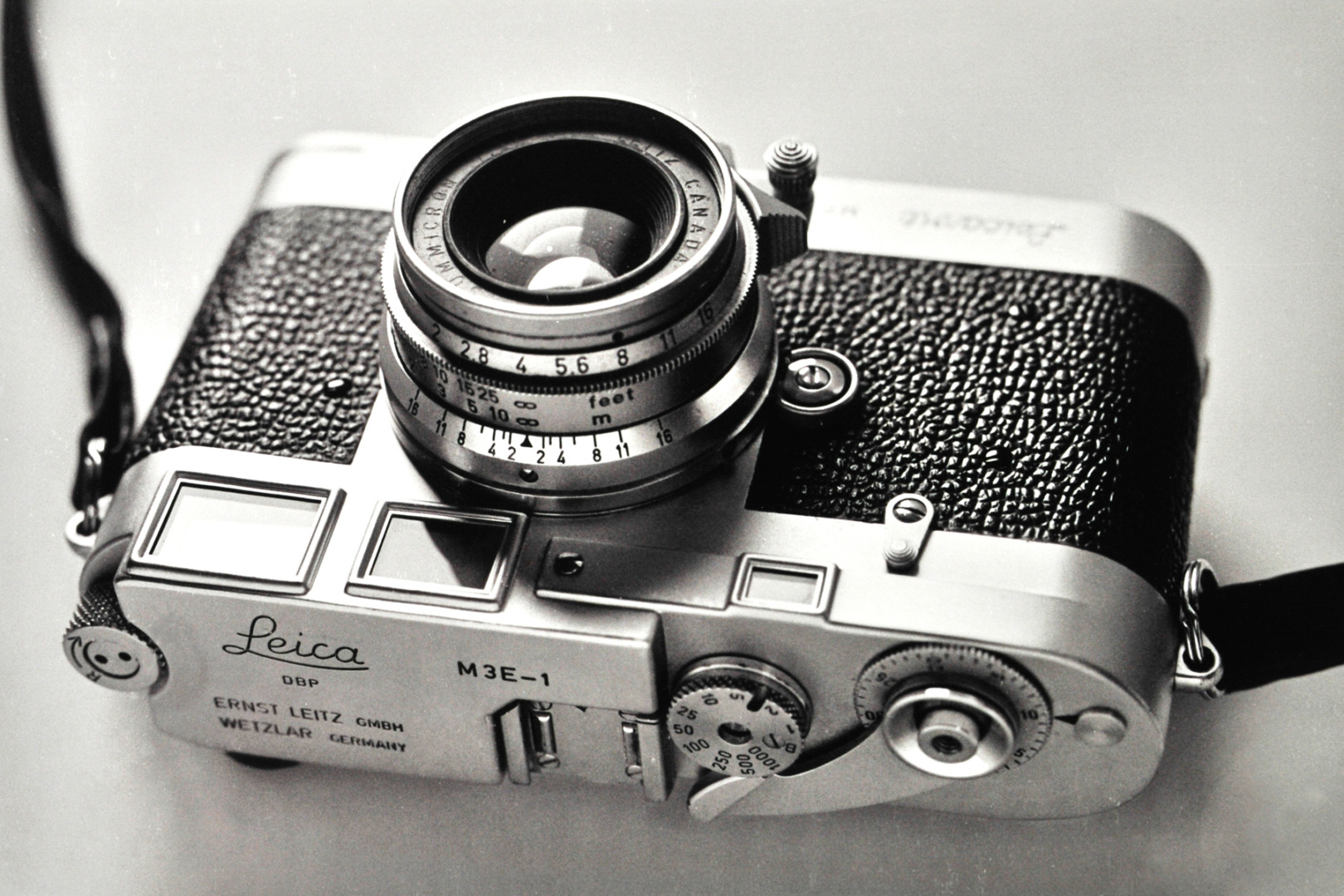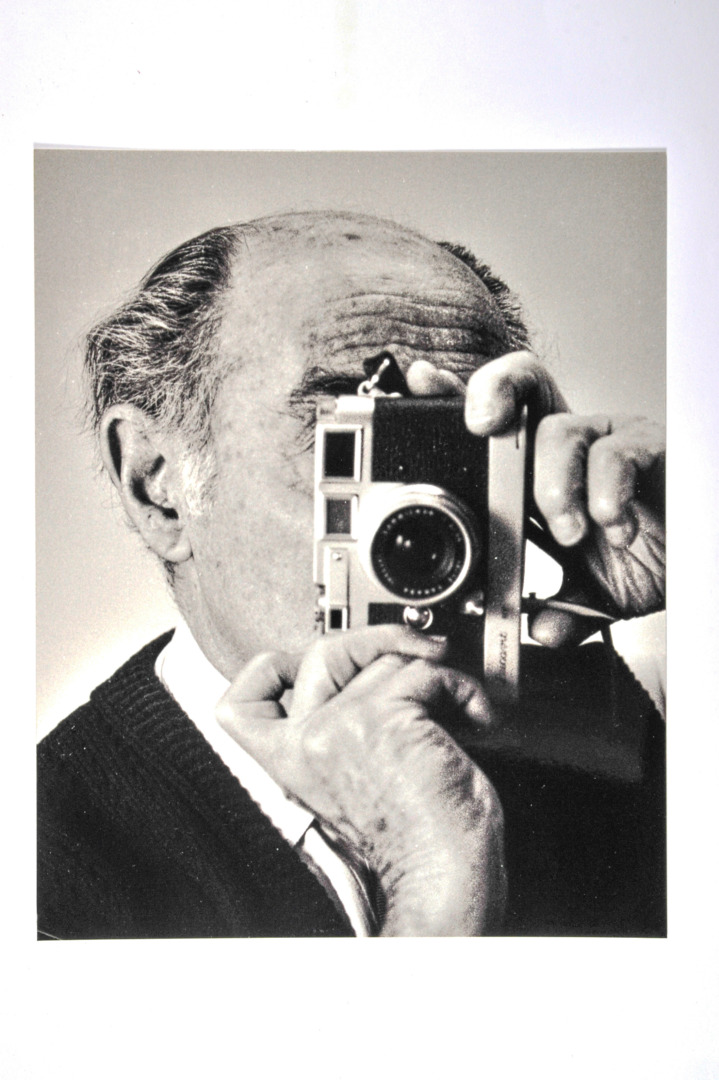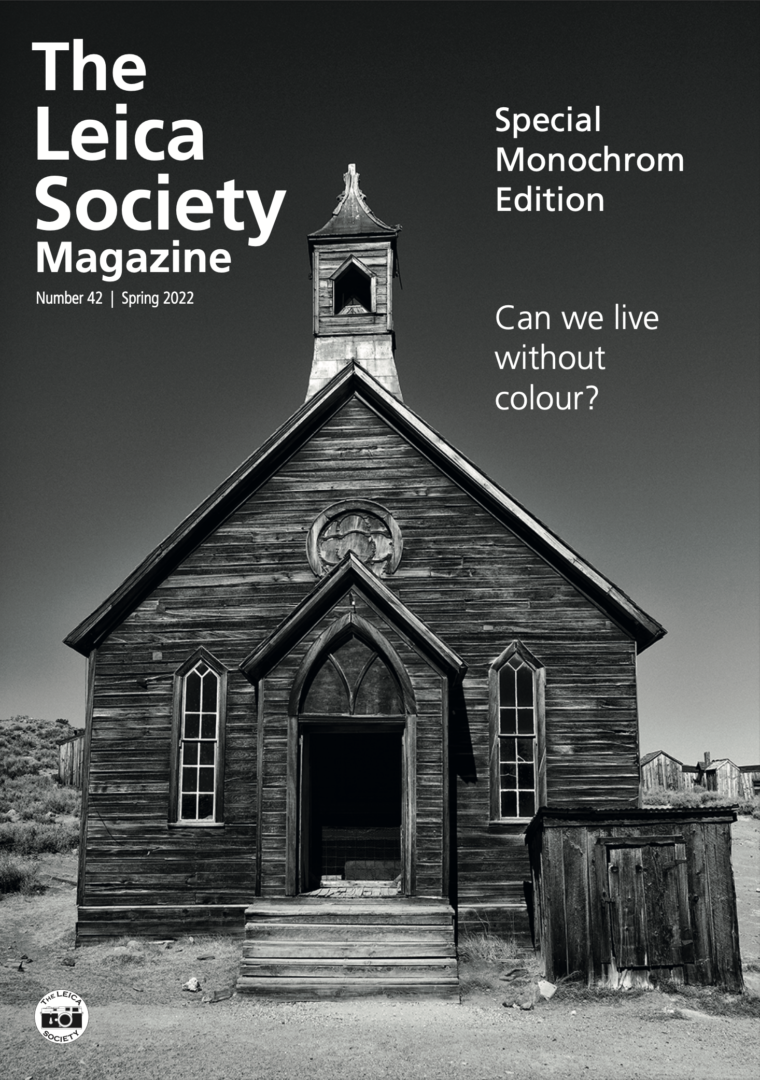In late 1979 E.Leitz, Inc, Rockleigh, New Jersey arranged for me to visit Alfred Eisenstaedt at his office in the Time-Life building in New York City. The expressed purpose was to inspect and photograph a special model of the Leica M3.
Prepared for Eisenstaedt around 1955, the camera was described as being essentially a pre-production Leica MP fitted with a Leicavit MP winder.

Eisenstaedt’s office
One can imagine my excitement when I reached the Time-Life building and told the receptionist that I had an appointment to see Mr Eisenstaedt.
Within minutes I was escorted to Eisenstaedt’s office… a tiny room crammed from floor to ceiling with yellow Kodak printing paper boxes. On the box ends, the contents were neatly recorded: The White House, The Kennedys, Ethiopia, and so forth. I immediately recognised that these boxes surely contained Eisenstaedt’s prints prepared over decades as a photojournalist.
Finally, Eisenstaedt appeared and I was immediately stunned by how short he was. He very politely introduced himself and proceeded to locate his special M3.

The Leica was residing in the back of his desk drawer and, when the drawer was firmly pulled open, the camera slid forward, hitting the drawer front with a resounding clunk.
Eisenstaedt nonchalantly handed the Leica to me saying, “This must be the one you want to see.” Indeed it was the Leica of interest and I asked if I could take a picture of it. Permission was granted and I took a few photos with my Leicaflex SL and 60 mm macro. After shooting the pictures I gave Eisenstaedt a copy of my then just published Leica Illustrated Guide II.
Who might you be?
He briefly looked at the section on viewfinders and muttered his amazement that he was able effectively to use that universal viewfinder that turned the world upside down when rotating the Leica for a vertical shot. He obviously meant the VIDOM!
Suddenly there was a voice behind me asking, ”And who might you be?”. The question was directed at me and the person asking was another legendary photographer, namely Carl Mydans. I introduced myself and was temporarily lost for words. After all, in front of me were two of the world’s most respected photojournalists.

We chatted for a few minutes and then it was time for me to depart. At the last second, I asked Mr Eisenstaedt if he would stand in front of me with his Leica as if he were taking my photograph… first a horizontal and then a vertical. He obliged and I very nervously managed several frames.
The photo I took of the Leica M3E-1 was first published in my Leica Illustrated Guide III in 1979 but I never printed the frames of Eisenstaedt operating this camera.
That was until 25 years after I looked through the SL. My dear friend Tsun Tam scanned the negatives, removed some distracting background in Photoshop and delivered the prints to me in 2004. Imagine! The world-renowned photojournalist with his unique Leica M3 for all to see a quarter of a century later. I will forever cherish my memories of this, for me, once in a lifetime experience. It’s even more impressive to look back now, over 42 years to when I visited Eisenstadt in his New York office.

This article first appeared in the Spring 2022 edition of The Leica Society Magazine. This is a milestone issue, concentrating largely on monochrome. It contains some wonderful articles, such as this reminiscence from Jim Lager, and many fantastic black-and-white images from Society members, including Macfilos authors Tom Lane and John Brockliss.
You can read all about The Leica Society on the club website. It’s well worth joining the TLS, even for the magazine alone, and costs from £30 a year. See all the joint and overseas prices and apply for membership here. If you do decide to join, please mention Macfilos as the source of your interest.
Make a donation to help with our running costs
Did you know that Macfilos is run by five photography enthusiasts based in the UK, USA and Europe? We cover all the substantial costs of running the site, and we do not carry advertising because it spoils readers’ enjoyment. Every amount, however small, will be appreciated, and we will write to acknowledge your generosity.

Great experience.
Interesting for me to compare the VIDOM with the Visoflex. Same idea, seldom used at the end
Jim gave us (LHSA) a talk on this in Chicago in 2017 about how he took photos of Eisenstaedt while Eisenstaedt took photos of him. The camera shown here was a special edition, of what became the MP, specially made for Eisenstaedt. Most here will know about the photo of the sailor kissing the nurse in Times Square photo, but, for me, the most impactful series taken by Eisie were the ones of Goebbels (in Geneva), particularly the one taken after his background had been mentioned to Goebbels. Eisie also took a great photo of George Bernard Shaw wielding what looks like a Leica I Model A. GBS was a moderate photographer with a lot of opinions about photography.
I’m looking forward to meeting Jim (and Mike) again at TLS AGM in Buxton this weekend. Jim and I are in regular contact and I always find him to be most generous with his knowledge and his time. He is a true gentleman.
William
The film counter is like the M2, not the M3. But a fascinating read.
B-but ..call it an M3, but it’s clearly got the frame-counter of an M2 (..and no M3 or M2 self-timer). This is really what’s now called an MP ..even though it’s engraved as ‘M3E-1’. (Maybe Eisy said “I don’t need no ***** self-timer”, and so it was removed for him.)
What’d be interesting to know – did you look through it? – is whether it had the M3’s 50-90-135mm frame-lines, or if it had the M2’s 35-50-90mm frame-lines ..that might help to decide whether it really was an M2 ..or an M3-with-M2-frame-counter.
So it seems useful at first glance ..but if you think about it ..it’s not! ..Weird, huh?
The slight awkwardness of this MP is that one hand’s needed for the shutter button – as usual! – and one hand’s needed for the ‘Leicavit’ rapid-action winder on the base ..so which (third) hand is used for focusing? Presumably Eisy pre-focused at the distance he was aiming for ..but you couldn’t focus with the left hand and shoot and wind-on with the right, if you needed the left thumb or finger for winding on!
Whoops; that 3rd paragraph/sentence was meant to come at the END ..sorry for the slip!